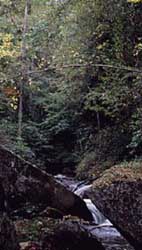 The Plantae includes all land plants: mosses,
ferns,
conifers,
flowering plants, and so on—an amazing range of diverse forms. With more than 250,000 species, they
are second in size only to the arthropoda.
The Plantae includes all land plants: mosses,
ferns,
conifers,
flowering plants, and so on—an amazing range of diverse forms. With more than 250,000 species, they
are second in size only to the arthropoda.
 The Plantae includes all land plants: mosses,
ferns,
conifers,
flowering plants, and so on—an amazing range of diverse forms. With more than 250,000 species, they
are second in size only to the arthropoda.
The Plantae includes all land plants: mosses,
ferns,
conifers,
flowering plants, and so on—an amazing range of diverse forms. With more than 250,000 species, they
are second in size only to the arthropoda.
Plants have been around for a very long time. The plants first appeared in the Ordovician, but did not begin to resemble modern plants until the Late Silurian. By the close of the Devonian, about 360 million years ago, there were a wide variety of shapes and sizes of plants around, including tiny creeping plants and tall forest trees.
The most striking, and important, feature of plants is their green color, the result of a pigment called chlorophyll. Plants use chlorophyll to capture light energy, which fuels the manufacture of food—sugar, starch, and other carbohydrates. Without these food sources, most life on earth would be impossible. There would still be mushrooms and algae, but there would be no fruits, vegetables, grains, or any animals (which ultimately rely on plants for their food too!)
Another important contribution of plants is their shaping of the environment. Think of a place without plants. The only such places on earth are the arctic wastelands, really arid deserts, and the deep ocean. Everywhere else, from the tundra to the rainforest to the desert, is populated by plants. In fact, when we think of a particular landscape, it is the plants which first come to mind. Try to picture a forest without trees, or a prairie without grasses. It is the plants which produce and maintain the terrestrial environment as we know it.
Visit also the following sites for additional information on paleobotany, plant systematics, and evolution:


